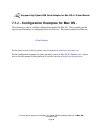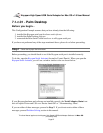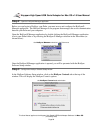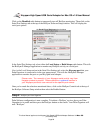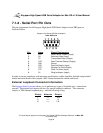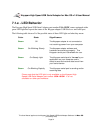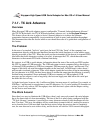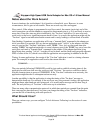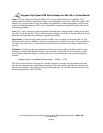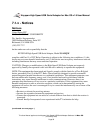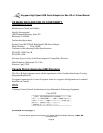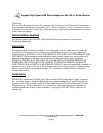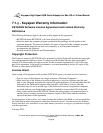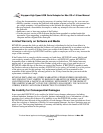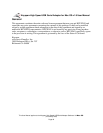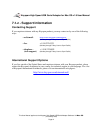
None
: If you're using a baud rate of 9600 or less, you probably don't have a problem. The 1
millisecond delay will not significantly affect your throughput, and you can select this option. This
option is also a good choice if you are running an application in which throughput is not an issue,
or one in which guaranteeing 100% correct operation is important enough that you'd prefer not to
risk having problems.
Auto
: The "Auto" setting uses the calculation described above when internal clocking is used and
sets the Tx Ack Advance to "None" when external clocking is used (this is because the host doesn't
know the baud rate when the clocking is supplied externally).
Experiment
: If you're using a baud rate above 9600, you can simply try increasing the Tx Ack
Advance setting, and see whether it improves performance (in which case, great!), causes problems
(in which case, don't use it), or doesn't make any difference (in which case it doesn't matter what
you do).
Calculate
: If you know that your application will not run into troubles with flow control or data
flushing, you know what baud rate it uses, and you'd like to adjust the Tx Ack Advance to most
closely approximate the timing of a built-in port, you can calculate the value yourself using this
formula:
integer( (baud / (totalBitsPerCharacter * 1000) ) + 0.5)
This will result in the host receiving the "transmit complete" message at approximately the same
time the last character has actually been transmitted. Note: the total bits per character includes the
start bit, the stop bit(s), the parity bit (if any) and the data bits. So, an 8-bit character with one stop
bit and no parity has a total of 10 bits.
Keyspan:High Speed USB Serial Adapter for Mac OS-v1.9 User Manual
This User Manual applies to the Keyspan High Speed USB Serial Adapter Software for
Mac OS
.
(rev 02may12JA)
Page 34



